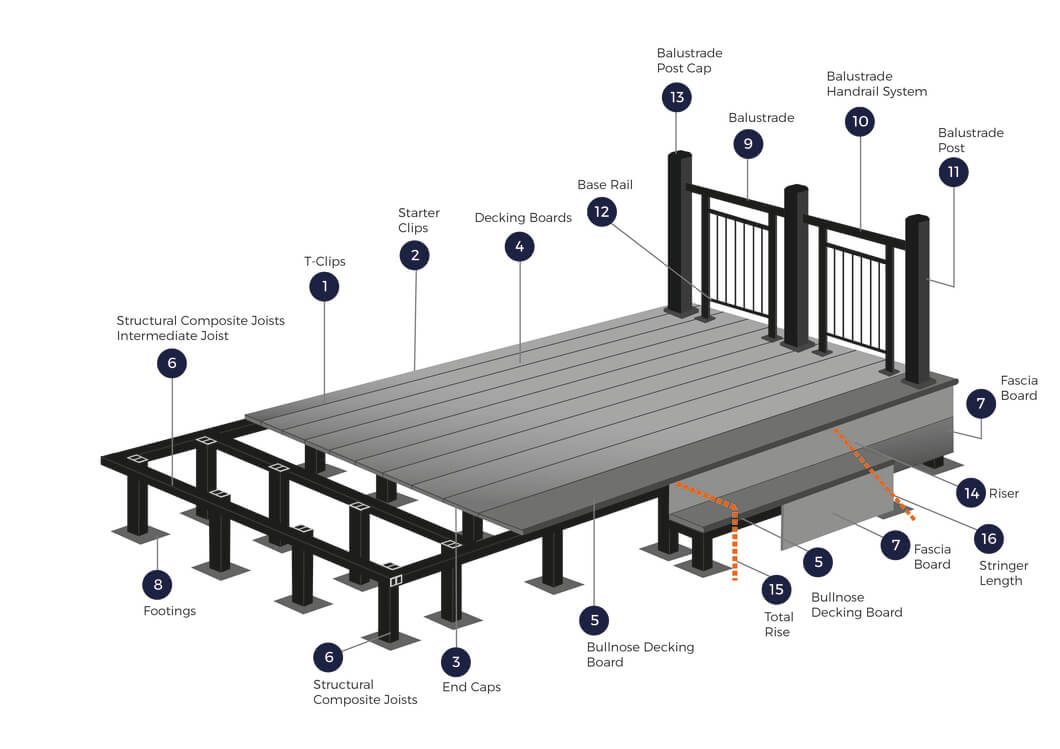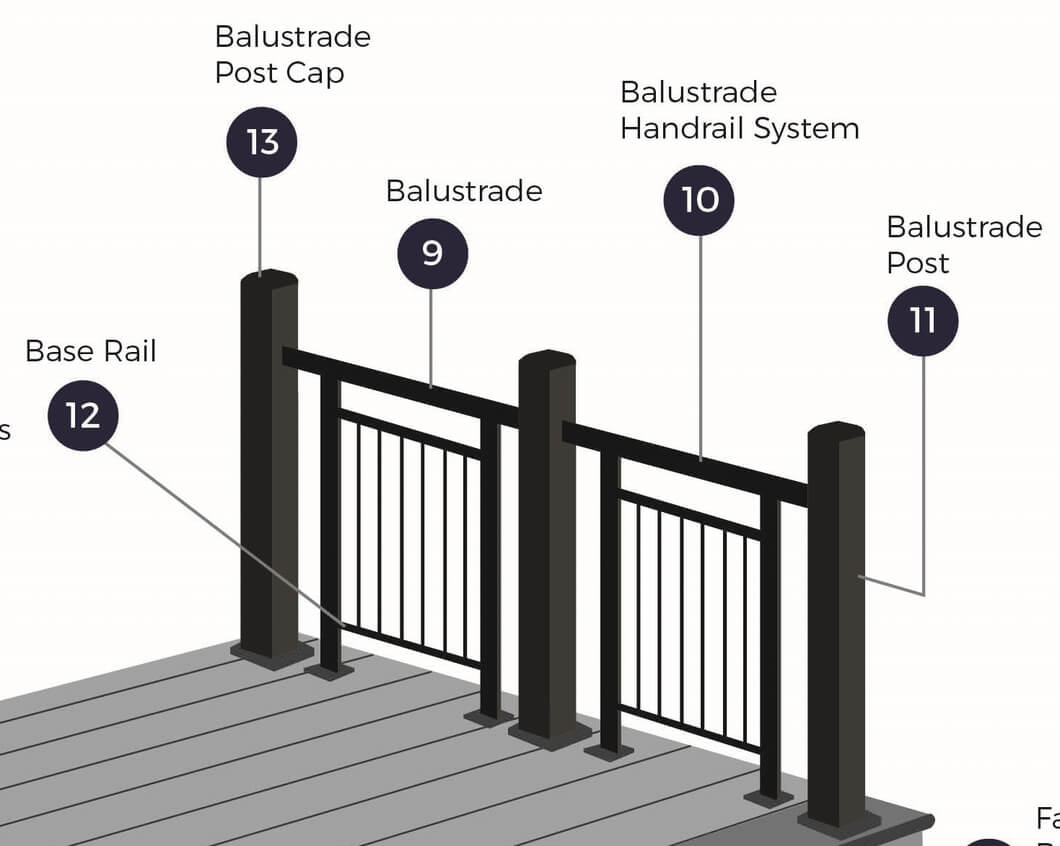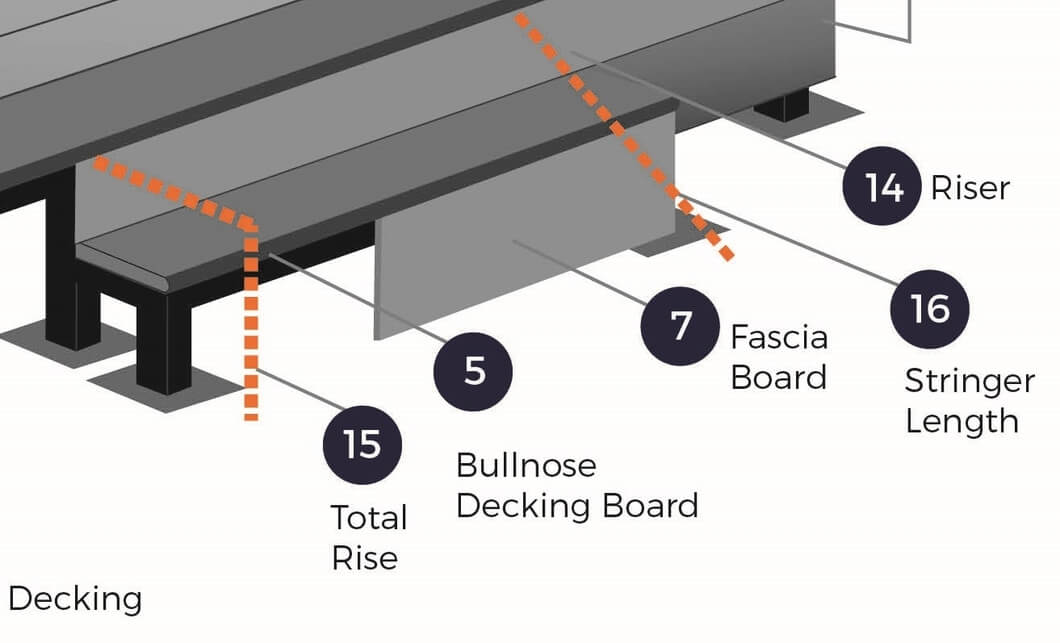Learning different names and terms is the first step to successfully installing your new garden decking area. We break down those important deck terms to explain what the pieces mean and how they relate to one another. From deck components such as a joist, post or a ledger, to the building of a stairway, footings, and horizontal treads, we've got it covered.
DECKING PART NAMES & DIAGRAM - DECK PART NAMES

1. T-Clips: Plastic T-shaped connector clips that join two Composite Deck Boards side by side. These are used to maintain a consistent 7mm gap between each board to allow for expansion and contraction.
2. Starter Clips: Metal fixings for an accurate starting point when laying decking boards. Starter Clips are secured against the adjacent object, such as a wall or fence.
3. End Caps: Cover the ends of Composite Hollow Deck Boards with matching End Caps for a neat and tidy finish.
4. Decking Boards: The top surface of your decking, comprising of Timber, Composite or PVC, fixed to supporting Joists.
5. Bullnose Boards: A rounded-edge board used for framing the perimeter of a deck.
6. Joists: The joists are supporting beams underneath a decking area. Joists will vary depending on the base material, for example, Composite Joists on concrete, or a structural beam for raised decks.
7. Fascia Boards: A type of board used to finish decks by covering the space between the concrete, or floor, and the decked area.
8. Footings: A footing, usually made from concrete, is a below-grade (underground) column to support the decking and posts.
Additional terms you'll usually come across in the construction of a deck:
Ledger: A ledger is a board that is attached to the side of a house to provide support for the deck boards.
Joist Hanger: A metal bracket that supports the joists without notching the ends of the joists.
DECK RAIL PART NAMES

9. Balustrades: The vertical struts making up the handrail section, spaced evenly and usually narrowly through the handrail to prevent people and objects from falling through.
10. Handrail: this is the top bar of the Balustrade section, sometimes referred to as 'Cap Rail'. These provide support between each post.
11. Posts: The vertical supports between each handrail section that take the weight of the balustrade sections.
12. Base Rail: The bottom rail along the bottom of the balustrade provides support for the struts. This prevents objects from sliding between the deck surface and under the balustrade system.
13. Post Cap: A covering that attaches to the top of the railing posts to finish and close off the exposed hole.
DECK STAIRS PART NAMES

14. Riser: A riser is the height of each step in a stairway. This can be calculated by measuring the height of the board and determines the total rise value.
15. Total Rise: Measured perpendicular from the ground to the top of the highest riser in the stair set.
16. Stringer Length: The distance from the top to bottom of the stair set, measured along the slope of the stairs from the first and last risers.
Additional terms you'll usually find in reference to stairs:
Tread: The treads on a stairway refer to the individual horizontal sections of each step.
Total Run: The full distance that the stairs cover, measured parallel to the ground, from the first step to the last step in a run.
CONCLUSION:
You'll find that the above deck terms should help improve your understanding of the parts of a deck structure. From the main deck to a footing, railing, joist hanger, or ledger. Make time to learn the ins and outs before building your deck.
For further help with installation and product support, please read our online Installation Guides, or contact us directly for further information by emailing: [email protected].

